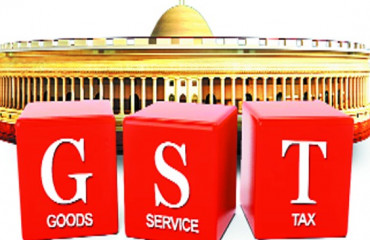
India was internally reorganized when the system of linguistic states was created in the first two decades after Independence. B.R. Ambedkar gave a succinct summary of the underlying principles: every state would have one dominant language, but every linguistic group need not be consolidated into a single state, which is why there are multiple Hindi-speaking states or why we have two Telugu states today.
India was internally reorganized when the system of linguistic states was created in the first two decades after Independence. B.R. Ambedkar gave a succinct summary of the underlying principles: every state would have one dominant language, but every linguistic group need not be consolidated into a single state, which is why there are multiple Hindi-speaking states or why we have two Telugu states today.
Few will today remember that the official States Reorganization Committee had even considered the possibility of redrawing state boundaries based on natural economic regions rather than geographical or linguistic attributes. That possibility was eventually rejected—and quite correctly so—because it would be difficult to identify such economic regions, and they would dynamically change as the Indian economy inevitably went through processes of structural transformation. The internal political arrangement should be based on more stable criteria that did not change like an amoeba.
What the States Reorganization Committee said way back in 1955 still holds true. The contours of India's economic geography have kept changing as the country developed. There are two ways this happens. First, the economic structure of a particular region changes over time, as old activities go into decline while new activities emerge to replace them. Sometimes entire regions go into decline while others emerge to take over. For example, Mumbai was once an industrial city; it has now become a service economy with a lead in some contemporary opportunities such as data centres and global capability centres set up by multinational corporations.
Second, the linkages between various locations also change over time. For example, what was once dominated by local supply chains may be transformed into an area that is linked to either wider global or national supply chains. In a recent paper, Bibek Debroy and Devi Prasad Misra used goods and services tax (GST) data to show that inter-state trade cumulatively grew more than 14 percentage points faster than the underlying economy between fiscal years 2017-18 and 2020-21, an indication of deeper economic integration between different regions within our national boundaries.
The introduction of GST, better infrastructure to move goods around and the deepening of national supply chains has meant that economic linkages are increasingly spilling across state boundaries. A region in a particular state may thus have stronger economic ties with a region in a neighbouring state, rather than with other parts of its own territory.
Tracking such economic ties across state boundaries has profound implications for Indian economic development as well as federalism. Most economic data we see comes from large national surveys. The information from these national surveys is also available at the level of states, but not enough has traditionally been known below the state level.
Some element of regional analysis is already built into the Indian statistical framework, which clusters groups of similar districts into a sampling region, a hat tip to the fact that large states have immense regional variations within them. Uttar Pradesh is divided into six such regions, for example. The entire country is divided into 75 regions for sampling by government statisticians. In their recent book Regional Economic Diversity: Lessons from an Emergent India, Poornima Dore and K. Narayanan have used these sampling regions to look at how India is doing below the state level.
However, these traditional sampling regions are still within the administrative boundaries of states. Economic regions follow a different pattern. They are not boxed in by state borders, and even more so after the introduction of GST as well as the expansion of both physical and digital infrastructure in recent years. It is very likely, for example, that a high-speed railway corridor between Mumbai and Ahmedabad will further strengthen an economic area that lies across two states, Maharashtra and Gujarat.
There is thus a growing need for data that does not just follow the patterns of administrative boundaries. There are already some interesting examples. I will mention three here.
First, the Socioeconomic High-Resolution Rural-Urban Geographic (SHRUG) data-set, created by a team led by Sam Asher, Paul Novosad and Tobias Lunt, uses administrative data to provide a multidimensional look at India at the level of a village, town and assembly constituency.
Second, the research team at McKinsey Global Institute has created a data-set that offers a granular view of economic activity that is often masked by broad averages such as national per capita income. Differences in living standards across political borders—both national and subnational—seem less stark, while differences within consolidated political areas diverge.
Third, during the pandemic, Raj Chetty used micro data to figure out the economic impact of the virus on consumer spending, business investment and employment prospects—all of it at the postal-code level.
The upshot: There are now data capabilities that allow economists to estimate economic activity at the pixel level. More of that is needed, to complement rather than replace older forms of aggregated data. In India, one good place to start would be by using firm-level data from the GST network, once it is suitably anonymized to prevent privacy intrusions. Unfortunately, Indian tax authorities continue to keep the doors to this data gold-mine padlocked.
